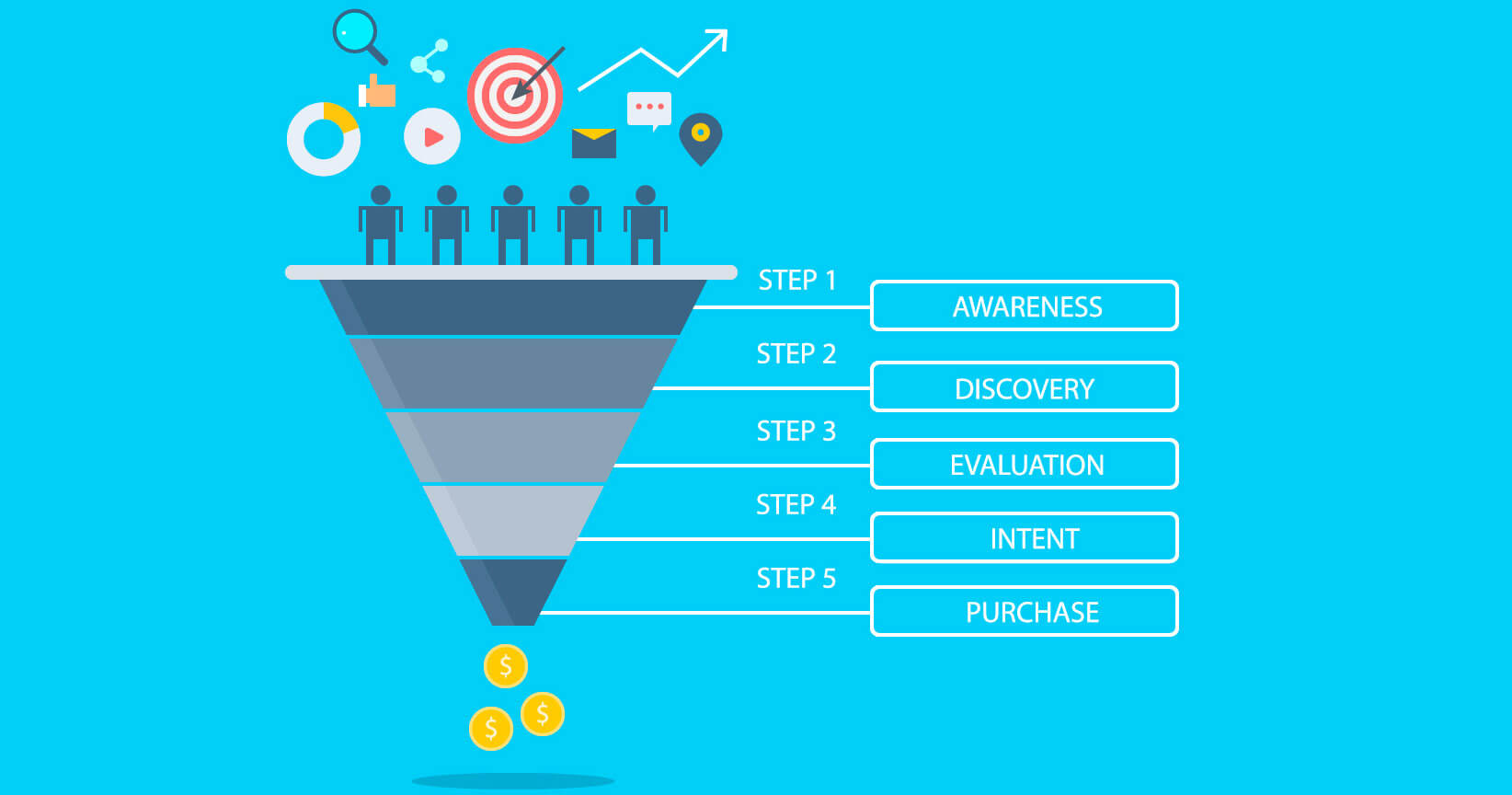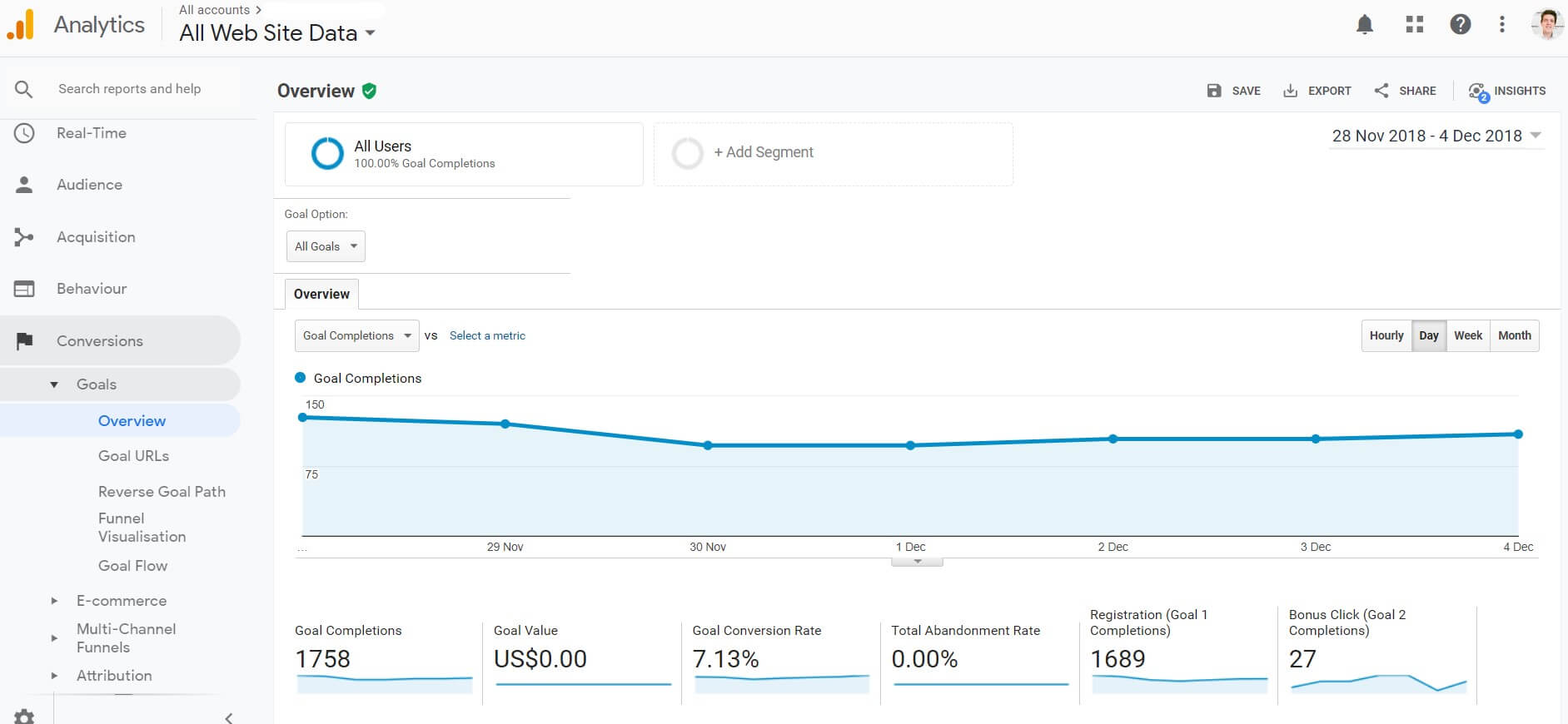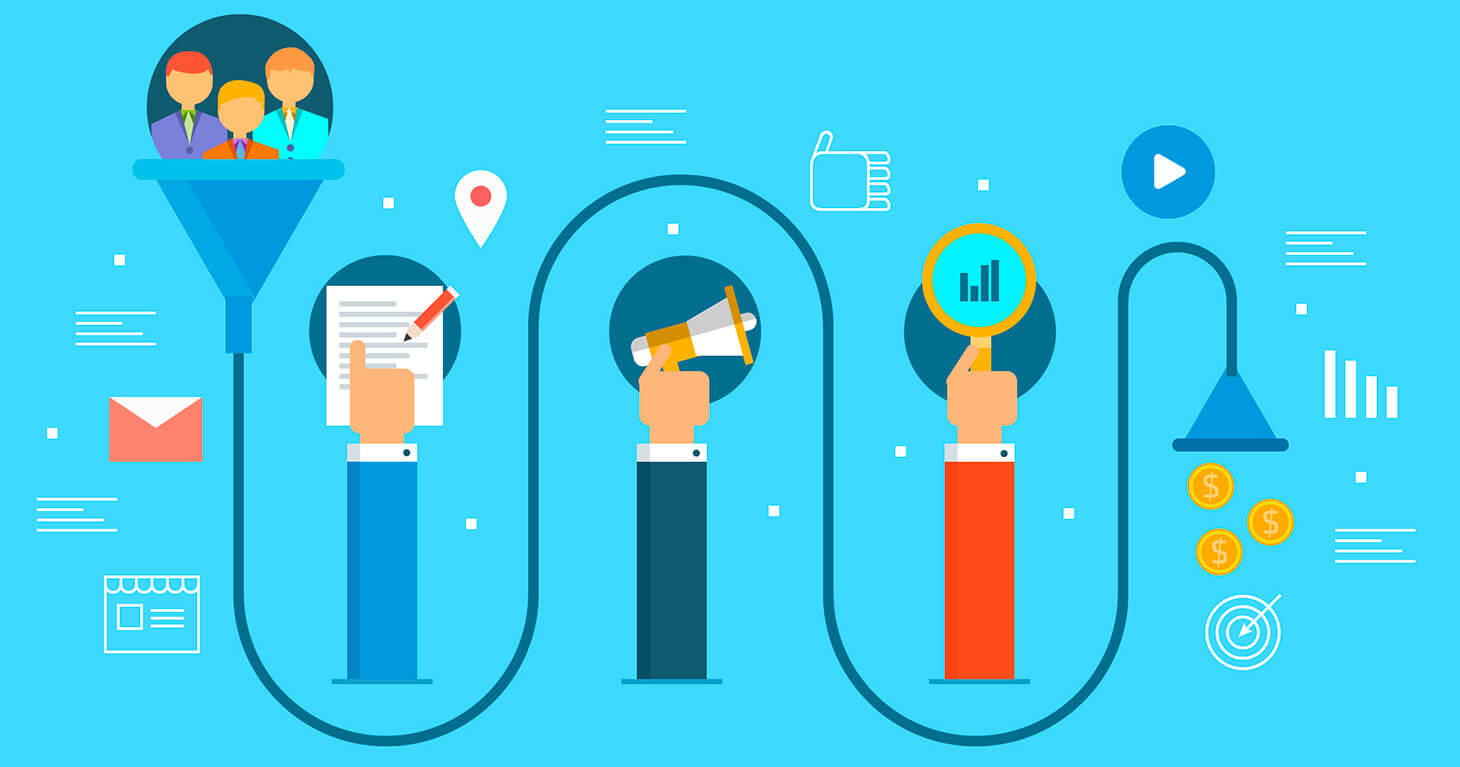What Is the Sales Conversion Funnel and How Does It Pull in Visitors?
The sales conversion funnel is a marketing model to illustrate the theoretical customer’s path from familiarity with the product up to the closed deal. This is by no means a formula for the business, but a tactic-simplified scheme to formalize the ideal consumer journey.
Reasons for the Funnel’s Development and Implementation
The sales conversion funnel is the framework for business automation. It helps solve the following tasks:
- Forecast customers’ behavior and sales.
- Correct the deficiencies on a certain stage.
- Understand the needs and demands of customers.
- Improve your strategy, not randomly, but with careful planning and the necessary data in front of you.
Note that the more you improve the funnel, the more you benefit from it. That’s why conversion funnel optimization and enhancing should be permanent.
Sales conversion funnel “responsibilities”:
- Bring information to the potential customer.
- Contact the lead.
- Make a deal.
- Deliver goods/services
- Get the payment.
Sales Funnel Peculiarities
Your final goal is the desired result on the bottom of the funnel. Moreover, it is not always direct sales. The goals you put at the bottom of the funnel depend on your business. The other elements are also diversе and are subject to the laws of your business. The model can consist of four or more stages.
The funnel’s building also depends on the tools you use for attracting traffic – whether it is PPC, social media or SEO. The funnel is diverse for inbound and content marketing, as well. For example, here is how to build a conversion funnel for the clients who have been attracted via SEO:
- Generate targeted traffic.
- Create compelling calls-to-action.
- Place notable content behind LPs.
- Capture leads.
- Nurture leads.
There can be more elements or fewer elements in any funnel, and they are always interchangeable. In other words, the customer conversion funnel is completely customized – you cannot recklessly copy it and strike gold. What is good for an information business may not fit retail.
Types of Sales Conversion Funnels
There two categories of sales funnels in digital marketing – for business and for websites.
In business:
- Potential customers
- Loyal customers
- Frequenters
- VIP-clients
On websites:
- Visitors
- Followers (if you have a blog)
- Buyers
- Frequenters
There are also three types of conversion funnels that are common for the two categories above:
- Acquisition
It means that vetting cold leads are on the bottom of this funnel. So, it should be built in order to find the underlying cause with the best profits. Let’s look at an example of the e-commerce acquisition funnel:
- The user visits the website.
- He views a product page.
- He puts the item into his cart.
- He enters the checkout process.
- He ends the checkout process and clicks “Purchase.”
The main task is to get as many purchasers as possible. For example, when dealing with information businesses, the funnel above will be quite different, and tripwire offers and lead magnets will get the main tools.
- Activation
Here, you should convert leads into recent customers. Therefore, your leads are “warm” or even “hot” already, and are ready to be converted to real customers. The main task here is to convince the lead that he needs your product right now. Okay, but how do I create a conversion funnel to activate leads? You can use techniques such as a deep discount or a limited-time offer, gifts and bonuses.
- Monetization
Now you should motivate your real customers to buy your products and to accept your other offers repeatedly in order to get the maximum revenue. When speaking about information businesses or other B2B niches, we can offer paid webinars, live events and master-classes. One of the most effective techniques is to offer your help in solving a wide range of issues – creating a site, making plans and checklists, fixing and decorating, etc. Opt-in forms and videos are the most appropriate tools here.
Note that these three types of funnels are a “must do” for every business. The main thing is to implement the funnel at the right time and to select the appropriate elements and tools.
Elements of a Conversion Funnel

Here is a structure based on the legendary AIDA that needs adjustments, of course:
- Awareness;
- Interest/Discovery;
- Desire;
- Action/Conversion;
- Purchase.
Note that actions and desires are different for different businesses! Now, let’s take a look at each of those elements.
- Awareness
It deals about the sources that are the most effective ones for attracting target traffic – your potential purchasers. You can use any of the valid marketing tools – PPC or blogs, social media or content marketing, as well as inbound marketing, SEO and referrals. To make the later stages of the funnel work, you should know for sure that your audience is completely targeted. Otherwise, your website visitors are being kicked out of the funnel and your bonus rate starts growing.
- Interest
Bingo! You’ve managed to create interest and your next step is to keep the potential customer interested. You should stress the advantages and uniqueness of your product via triggers. Try to demonstrate the various ways of to use it and offer diverse purchasing options if possible.
- Desire
On this stage, the interest should turn into desire. This is the right moment to provide a client with as much information about your product as possible. As a seller, it is also necessary to show your own unique features and benefits in order to answer the customer’s question regarding competition, which is, “Why should I buy here?”
- Action/Conversion
If you handled creating the demand for your product and for yourself, the potential customer is ready to turn into the real one. Use a powerful final call-to-action to motivate him making the last step.
How to create a conversion funnel that is capable:
Your first step is to define stages, for example:
- Social ads;
- Blog posts;
- LPs;
- Email auto responders;
- Offers.
You can add some extra stages to any basic funnel – request for feedback, a proposition of expanded guarantee/insurance, etc. Despite the differences between funnels in various niches, there are some rules on how to create a conversion funnel:
- If you use several sources of traffic, create a funnel for each of them.
- The stages of a funnel can coincide with the business process or unite several of them.
- The boundaries of every stage should be marked accurately.
- The same action can be placed on different stages, but only if you are changing the goal.
- Note that the user can move the funnel both forward and backwards.
- Use CRM-systems to automate a funnel.
Remember that you can only create the initial funnel that needs further analysis and improvement. Don’t overburden it with unnecessary stages. Only take into account real opportunities to let the users pass through all stages.
Set up Analytics for Tracking Your Conversion Funnel
Conversion funnels require deep and accurate analyses, because there are too many factors that may influence the success of its implementation – tools for promotion, segmenting target audience, pricing policies, USP, etc. It is necessary to track conversions to reveal the stages of client flight and to manage sales. There are special services for this purpose. Now, we’ll see how to create a conversion funnel in Google Analytics (GA).
- Set up goals (Destination, Duration, Event or Pages/Screen per session). It is possible to create your own goal or customize the users’ goals.
- Add them to GA.
- Set up tags of tracking GA’s events.
- See the reports that are available 24/7 in the “Conversions” part:

Google Analytics is the most appropriate tool for tracking your funnel because it is free and completely compatible with any website. It permits you to find narrow places in the chain of interaction within the site and builds the assumption for further testing. In other words,
Tips on How to Improve Your Conversion Funnel
The most important thing is to calculate conversion to see its value. How likely are the visitors to convert and how much are each of them? The accurate conversion funnel analysis is the very beginning of its improvement. The traffic growth does not guarantee the sales growth and that’s why the conversion of every stage should be improved simultaneously. At the same time, you should expand the first stage constantly to increase outreach via your USP and your exact choice of target audience.
A competent conversion rate optimization starts with identifying your funnel’s leaks and the right conclusions. For example, if you found out that too many visitors leave your site in a minute after they have landed it, you should focus on improving your USP. Remember that it is necessary to test each of your improvements.
Your method of optimization depends on your goal. It is rational to use a blog to attract new visitors. When popularizing your blog, pay attention to cross-promotion in social networks. Create valid content on social media to increase the number of referrals. Use PPC to attract leads to your LP and to collect their contacts via lead magnets.
Why It’s Important to Care About the Conversion Funnel
So, we’ve already found out what a conversion funnel is, its structure, how to build it, analyze it and improve it. At this point, managing the funnel should be stressed. The sales/conversion funnel is a direct way to sales growth. However, it doesn’t work independently and requires your undivided attention.
Have you managed to attract users? Great! Then do your best to keep this attention. Done? Come on, we have a long way to go. Make them eager to make purchases. Don’t forget to reveal the leaks and remove them in the early stages, build your own strategy and forecast results.
When taking care of your conversion funnel, you’ll be able to increase the profitability and to influence your target audience in a coherent and focused manner.




